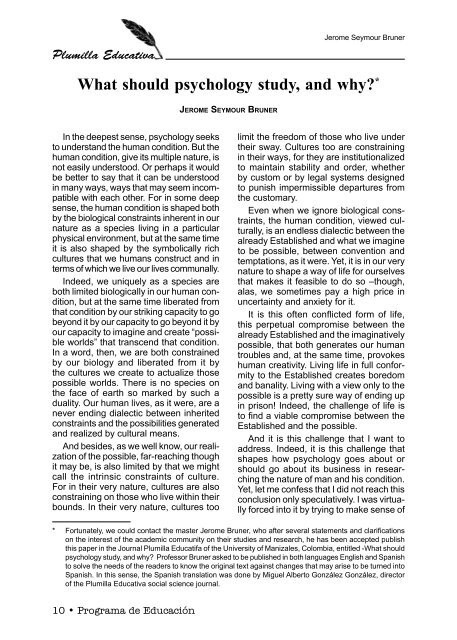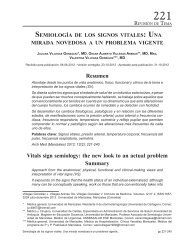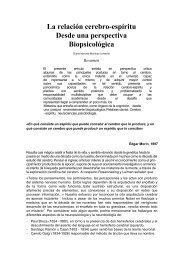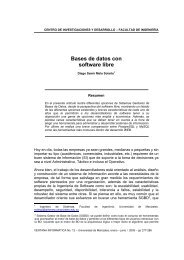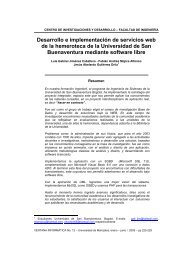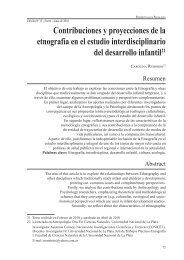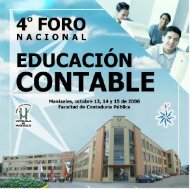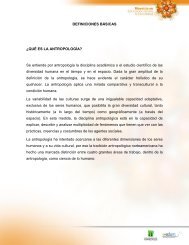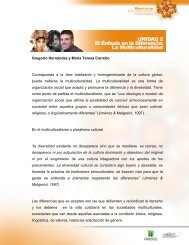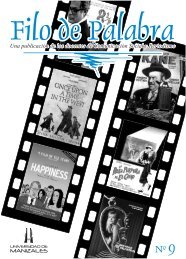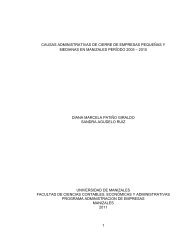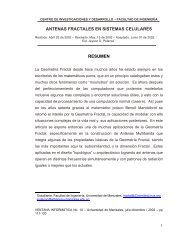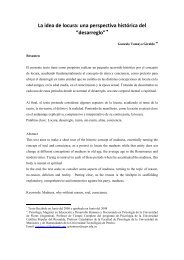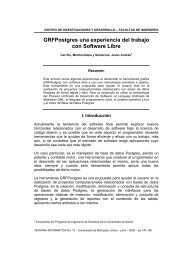Plumilla Educativa 7.pdf - Universidad de Manizales
Plumilla Educativa 7.pdf - Universidad de Manizales
Plumilla Educativa 7.pdf - Universidad de Manizales
- No tags were found...
You also want an ePaper? Increase the reach of your titles
YUMPU automatically turns print PDFs into web optimized ePapers that Google loves.
<strong>Plumilla</strong> <strong>Educativa</strong>Jerome Seymour BrunerWhat should psychology study, and why? *Jerome Seymour BrunerIn the <strong>de</strong>epest sense, psychology seeksto un<strong>de</strong>rstand the human condition. But thehuman condition, give its multiple nature, isnot easily un<strong>de</strong>rstood. Or perhaps it wouldbe better to say that it can be un<strong>de</strong>rstoodin many ways, ways that may seem incompatiblewith each other. For in some <strong>de</strong>epsense, the human condition is shaped bothby the biological constraints inherent in ournature as a species living in a particularphysical environment, but at the same timeit is also shaped by the symbolically richcultures that we humans construct and interms of which we live our lives communally.In<strong>de</strong>ed, we uniquely as a species areboth limited biologically in our human condition,but at the same time liberated fromthat condition by our striking capacity to gobeyond it by our capacity to go beyond it byour capacity to imagine and create “possibleworlds” that transcend that condition.In a word, then, we are both constrainedby our biology and liberated from it bythe cultures we create to actualize thosepossible worlds. There is no species onthe face of earth so marked by such aduality. Our human lives, as it were, are anever ending dialectic between inheritedconstraints and the possibilities generatedand realized by cultural means.And besi<strong>de</strong>s, as we well know, our realizationof the possible, far-reaching thoughit may be, is also limited by that we mightcall the intrinsic constraints of culture.For in their very nature, cultures are alsoconstraining on those who live within theirbounds. In their very nature, cultures toolimit the freedom of those who live un<strong>de</strong>rtheir sway. Cultures too are constrainingin their ways, for they are institutionalizedto maintain stability and or<strong>de</strong>r, whetherby custom or by legal systems <strong>de</strong>signedto punish impermissible <strong>de</strong>partures fromthe customary.Even when we ignore biological constraints,the human condition, viewed culturally,is an endless dialectic between thealready Established and what we imagineto be possible, between convention andtemptations, as it were. Yet, it is in our verynature to shape a way of life for ourselvesthat makes it feasible to do so –though,alas, we sometimes pay a high price inuncertainty and anxiety for it.It is this often conflicted form of life,this perpetual compromise between thealready Established and the imaginativelypossible, that both generates our humantroubles and, at the same time, provokeshuman creativity. Living life in full conformityto the Established creates boredomand banality. Living with a view only to thepossible is a pretty sure way of ending upin prison! In<strong>de</strong>ed, the challenge of life isto find a viable compromise between theEstablished and the possible.And it is this challenge that I want toaddress. In<strong>de</strong>ed, it is this challenge thatshapes how psychology goes about orshould go about its business in researchingthe nature of man and his condition.Yet, let me confess that I did not reach thisconclusion only speculatively. I was virtuallyforced into it by trying to make sense of* Fortunately, we could contact the master Jerome Bruner, who after several statements and clarificationson the interest of the aca<strong>de</strong>mic community on their studies and research, he has been accepted publishthis paper in the Journal <strong>Plumilla</strong> Educatifa of the University of <strong>Manizales</strong>, Colombia, entitled -What shouldpsychology study, and why? Professor Bruner asked to be published in both languages English and Spanishto solve the needs of the rea<strong>de</strong>rs to know the original text against changes that may arise to be turned intoSpanish. In this sense, the Spanish translation was done by Miguel Alberto González González, directorof the <strong>Plumilla</strong> <strong>Educativa</strong> social science journal.10 • Programa <strong>de</strong> Educación


